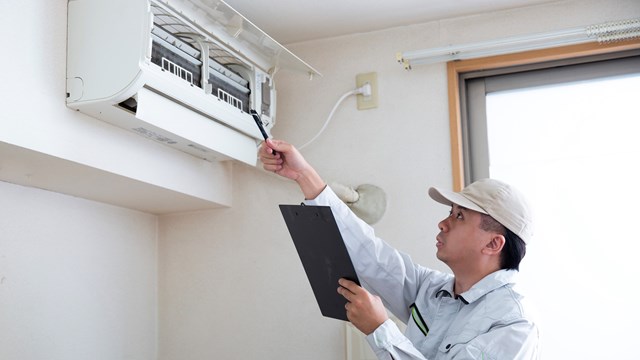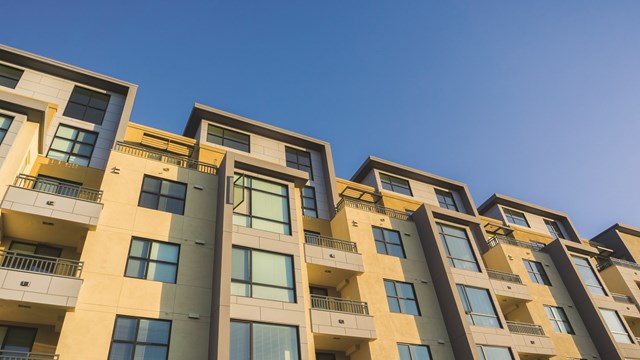Nowadays people are using their computers to connect to the Internet for just about every facet of their lives. Whether it’s buying cheap airline tickets, making reservations at their favorite restaurant or connecting with old friends on Facebook, most people are parked in front of their computer screens or connect remotely with their BlackBerry or iPhone at all hours of the day or night.
New York condos and co-ops have gotten in on the act. Realizing that most of their homeowners are Internet-savvy, many buildings have developed their own personal website so residents can find out important information about the building, request documents and work orders and in some cases, communicate as a social network with other people in the building.
Thanks to the websites, the board and tenants can maintain a 24/7 presence on matters relating to the day-to-day operations of their building, with just a click of their mouse.
A Helping Hand
“The most obvious benefit for a web presence is that it can be used to post information about the building, such as terms of the proprietary lease, the house rules, procedures so that the shareholders have ready access to the information they need to function in the building properly,” says Marc J. Luxemburg, an attorney and the president of the Council of New York Cooperatives & Condominiums (CNYC). “It’s a big benefit for the board and cuts down on the number of phone calls.”
There are numerous advantages to having a website for your building. Residents are working all day and may not have time to call the management office to have their questions answered or request a work order. It’s very simple to log onto a website and send a quick e-mail or scroll through the commonly asked questions portion of the site and find your answer there.
“It makes information flow quicker and easier,” says Paul J. Herman, director of management and an executive vice president for the Manhattan-based real estate firm Brown Harris Stevens. “It helps the residents in so many ways. It could be something as benign as a package being delivered or a work order for a repair. It really could be anything.”
True. Residents can request maintenance tasks and other information via their association’s website and log back on at a later time to see if the item has been received. Doormen can take deliveries for working residents and inform them about the package. Residents can log on to communicate with the doorman to check on package deliveries or guests.
“The tenant maintenance request is very popular on the site,” says Josh Salon, vice president of Salon Realty in Manhattan. “If someone is at work or busy and they have a problem—they have a leak, the door isn’t closing properly, whatever it may be—they can send an e-mail with the description of what’s wrong. We can forward it to the super or plumber and they know what the problem is and it makes it easier for everyone.”
You can also use a personal password to get individualized financial statements for the past four or five years, which is a big help to residents.
Information Highway
The Park Royal has had their own website up and running for three years now and they have gotten very positive responses from their residents.
“We set it up with the hope that it would help residents and it hasn’t disappointed,” says Neil Zee, resident manager for the co-op. “As far as getting information, you need a special password and people are able to go and get building forms, tax returns, all the information that you normally make a million phone calls to get.”
They basically put their welcome package online and residents can find neighborhood information about alternate street-side parking, local restaurants and dry cleaners and basic things about the neighborhood.
The site also offers non-residents the chance to log on and take a look at what the building has to offer, which helps with prospective buyers.
“We have private access to the residents and shareholders and then we have general information that is available to the shareholders so they can find out public information about the building, such as its history,” Zee says. “We have had a lot of positive response from people outside who are interested in buying or learning about the building.”
Price of Bits and Bytes
About a decade ago, the idea of spending money on a website for a building would have resulted in many a debate at board meetings, as creating and maintaining a personalized custom website cost thousands of dollars and the money could probably be better spent elsewhere in the building.
Fortunately, that’s no longer the case. Now, affordable software programs and websites that are pre-formatted allow associations the luxury of signing up, logging in and getting started very cheaply.
“We have a setup fee of $50 and a monthly fee based on the number of homes in the association, and they tell us what features they want and don’t want and we customize their site for them in a week,” says Susan Sanders, marketing director for AtHomeNet, which provides community associations their own interactive websites. “We offer them the ability to maintain, but 90 percent of our clients maintain their own sites.” If associations were to choose to have AtHomeNet maintain their site, the cost would be about $50 a month, according to Sanders.
AtHomeNet currently has around 280 customers in the New York and New Jersey area. Other popular providers are BuildingLink and Association Voice, which have fees in the same range.
“BuildingLink empowers management to run their buildings easily and transparently, enables staff to handle their myriad day-to-day tasks seamlessly and accurately, helps foster a sense of community among your residents, and enhances your building’s or company’s unique brand identity,” says BuildingLink’s president, Jerry Kestenbaum. “The top-to-bottom system is also helping buildings’ boards of directors and occupants enjoy a more interactive level of communications with and support from their management.”
For those that don’t want to spend any money, if you have someone on the board or a resident willing to volunteer their time and expertise, a basic website can be set up for free at Google or any number of the free web domains.
Some of these websites offer advertising opportunities as well to off set some of the expense.
Community Network
Although many choose not to go this route, a building’s website can also be used as more of a social environment with forums, chats and blogs included so residents can talk to each other and post messages.
According to Sanders, those that are not using these applications are missing out.
“Our clients like to build their community online,” she says. “There is a public area where you can brag about why it’s a great place to live, but there’s a place for the residents to interact and discuss pertinent things.” They can also offer services such as babysitting or post garage sale information.
“It’s your own personal Craigslist within your neighborhood,” she says.
The Park Royal even offers photos of its staff on the site to make the building more user-friendly.
“I know there are some out there that have forums and chats and so forth, by going to more widespread applications [that] allow residents to connect with each other. But, that creates the same problems that any other forum or blog has, and that’s how can you control what’s being said,” Luxemburg says. “That can be a source of annoyance more than just being a source of information.”
Herman agrees, especially when it comes to blogs.
“When I read about blogs, they almost always have negative comments and I think that can be problematic,” he says. “You can put a newsletter online and that’s a way for people to connect in this manner. You can list things on a bulletin board. People can be as creative as they want.”
Inter-not!
Of course, the biggest drawback to having a web presence in your building is that not everyone is Internet-savvy these days, especially the older residents. A senior couple may not even own a computer.
“Things are always available offline but even the least computer-savvy people have an e-mail now and have some sort of Internet access,” Salon says. “There are a dwindling few who don’t, but the vast majority of people will do it directly through the web other than traditional methods.”
But even those with computers and access don’t always like or “trust” the web and still want to see a hard copy for everything in front of them.
“There are always a few people who aren’t interested in dealing with this technology and so you can’t rely strictly on the computer for handling information,” says Herman. “There are always members of every community that aren’t interested in receiving anything but paper.”
For buildings that have people without computers, one idea is to have someone act as a “computer buddy” and when important information that is immediate is given over the computer, that friend can let the person know. This would apply to instances such as an e-mail sent letting residents know the elevator wasn’t working.
Luxemburg feels that this won’t be a problem for too much longer.
“In a manner of a few years, there will be an almost infinitesimal amount of people who don’t have access to a computer,” he says.
Final Thoughts
The Internet is just as much a part of our society today as the cell phone and creating a website for your building is an important way for residents to stay connected and people to learn about your building.
“The brokers love it. Appraisers love it. Residents love it,” Salon says. “It makes their life so much easier and it makes our clients’ lives that much easier too because everything they need is right on the web.”
Keith Loria is a freelance writer and a frequent contributor toThe Cooperator.







Comments
Leave a Comment